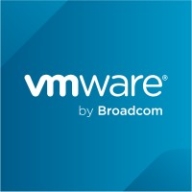

IBM Spectrum Computing and VMware Tanzu Platform are competitive solutions in the cloud computing and virtualization space. IBM Spectrum Computing is more cost-effective, while VMware Tanzu stands out for businesses prioritizing a rich feature set.
Features: IBM Spectrum Computing provides robust workload management, high-performance computing, and seamless IBM technology integration. VMware Tanzu Platform supports modern application development with Kubernetes integration, microservices architecture, and innovative cloud-native applications.
Room for Improvement: IBM Spectrum Computing could enhance its simplification of complex systems, build user-friendly interfaces, and expand its support for diverse environments. VMware Tanzu could streamline its deployment processes, improve the integration with non-VMware products, and simplify its complex setup for users unfamiliar with its systems.
Ease of Deployment and Customer Service: IBM Spectrum Computing offers streamlined deployment and responsive customer support. VMware Tanzu, although featuring a more complex deployment model, benefits from thorough documentation and a supportive community. IBM excels in deployment efficiency, while VMware provides extensive consultation options.
Pricing and ROI: IBM Spectrum Computing provides competitive pricing and promises a strong ROI with cost advantages. VMware Tanzu requires a higher initial investment but offers significant value through its comprehensive feature set and scalability, positioning itself as a premium option for advanced functionality.
| Product | Market Share (%) |
|---|---|
| VMware Tanzu Platform | 1.1% |
| IBM Spectrum Computing | 1.0% |
| Other | 97.9% |


| Company Size | Count |
|---|---|
| Small Business | 3 |
| Midsize Enterprise | 1 |
| Large Enterprise | 6 |
| Company Size | Count |
|---|---|
| Small Business | 10 |
| Midsize Enterprise | 3 |
| Large Enterprise | 10 |
IBM Spectrum Computing uses intelligent workload and policy-driven resource management to optimize resources across the data center, on premises and in the cloud. Now up to 150X faster and scalable to over 160,000 cores, IBM provides you with the latest advances in software-defined infrastructure to help you unleash the power of your distributed mission-critical high performance computing (HPC), analytics and big data applications as well as a new generation open source frameworks such as Hadoop and Spark.
VMware Tanzu Platform is designed for cloud-native development and management of Kubernetes, CI/CD processes, microservices, and containerized workloads. It supports deployments both on cloud and on-premises, providing centralized management via Mission Control.
VMware Tanzu Platform offers seamless integration with vSphere, ESX, and vSAN, supporting centralized cluster management and lifecycle management. The platform provides a GUI for monitoring CI/CD pipelines and network policies, enhancing multi-tenancy and Day 2 operations. Users can easily manage Kubernetes clusters, monitor applications, and integrate with tools such as GitHub, GitLab, Cloud Foundry, and Azure. It ensures compliance and security for service providers, financial institutions, and businesses.
What are the key features of VMware Tanzu Platform?
What benefits and ROI should users look for in VMware Tanzu Platform reviews?
Industries such as financial institutions, service providers, and businesses requiring rigorous compliance and security deploy VMware Tanzu Platform. These entities benefit from centralized management, streamlined DevOps processes, and integrated tools, enhancing their capabilities in cloud-native developments and containerized workloads.
We monitor all Cloud Management reviews to prevent fraudulent reviews and keep review quality high. We do not post reviews by company employees or direct competitors. We validate each review for authenticity via cross-reference with LinkedIn, and personal follow-up with the reviewer when necessary.